Hunters understand wind can make or break a hunt, and mastering the wind means understanding its effect when blowing in every direction, even up and down. Thermal winds, or thermals, are vertical movements of air caused by temperature changes. Thermals carry your scent and play a critical role in how animals detect hunters.
Here, we break down how thermals work, how they interact with prevailing winds, and how you can use this knowledge to become more successful on your next spot-and-stalk or in choosing where to sit.
The Science Behind Thermal Inversions
Thermals are driven by temperature gradients, or the difference in temperature between two areas. These temperature changes create thermal wind movements, though these are not winds in the traditional sense. As the sun rises, it warms the ground, and in turn, the air near the surface becomes warmer. This warmer air begins to rise because it is lighter than the cooler air above it.
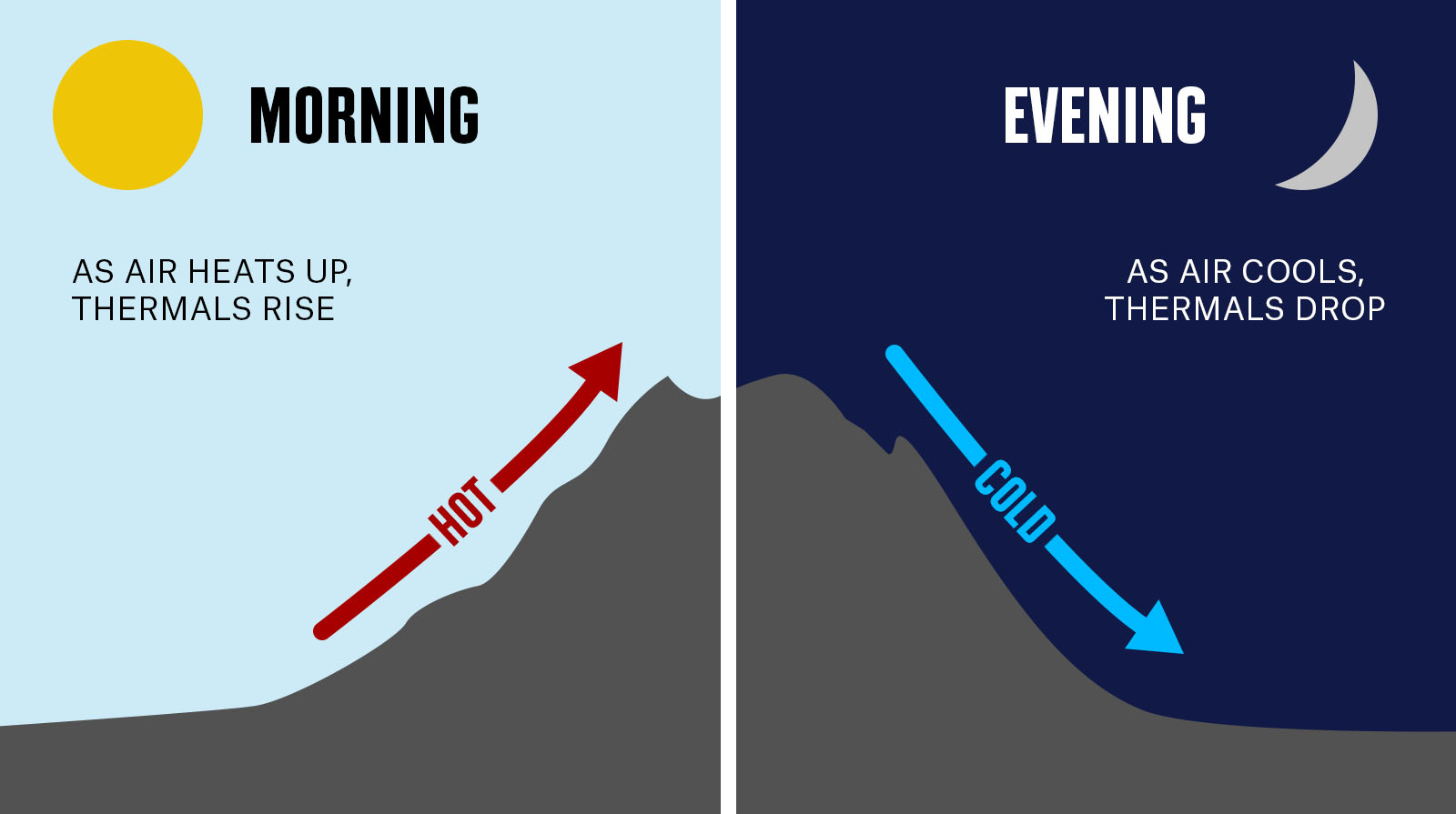
As the sun sets and begins cooling the air, those cold temps cause the air to drop and thermal winds move downward.
The greater the difference in temperature (temperature gradient), the stronger these thermal currents become.
Eastmans’ Brian Barney has studied thermals in detail and provides a useful rundown of how to use them to your advantage. Watch the onX Hunt Masterclass clip below:
How Prevailing Winds Affect Thermal Winds
While thermals are driven by temperature changes, prevailing winds are the directional winds that blow due to weather systems. These winds tend to kick in around 10 a.m. in most locations. When prevailing winds are strong, especially over 15 mph, they can override thermals, making them less of a factor in hunting.
If you hunt in the morning when thermals are rising, you can use the prevailing wind to mask your scent as you move downwind. However, as the day progresses and the prevailing wind strengthens, the thermal effects become less noticeable.
Later in the day, you can rely more on the direction of the prevailing wind rather than thermals. In essence, while thermals give you insight into how scents will behave, the prevailing wind provides a more constant indicator once it gets strong enough.
When prevailing winds are strong, especially over 15 mph, they can override thermals, making them less of a factor in hunting.
Thermal Hubs: The Role of Topography on Thermals
Topography adds complexity to predictable thermal patterns. Thermal hubs occur where several draws or drainages meet, creating swirling winds that make scent control particularly challenging. Even smaller elevation changes between 50-100 feet can have thermals, and those thermals can react to prevailing winds.
Whitetail hunters who understand thermal hubs significantly enhance their hunting strategies. A thermal hub is an area where multiple ridges or valleys converge, creating a natural funnel for wind and thermal currents. These hubs act as channels for rising and falling air.
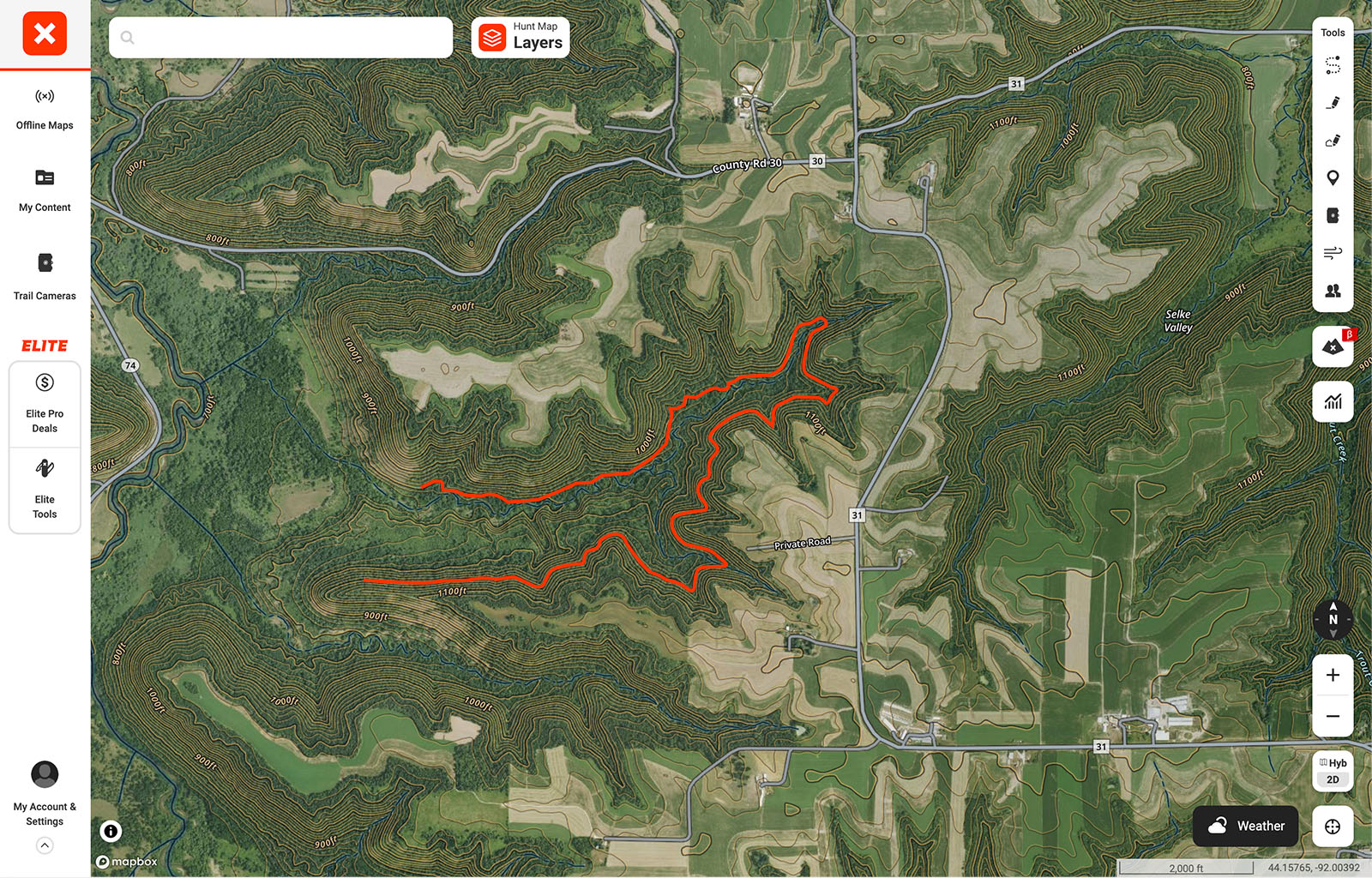
In the morning, setting up above a thermal hub keeps your scent from reaching deer bedding in valleys below. Deer tend to move toward these hubs in the mornings, feeding or transitioning to bedding areas, providing excellent opportunities for a well-placed shot.
In the evening, as temperatures cool, thermals drop and pull scent down into the valleys. Positioning yourself on the lower end of a ridge just before these thermals start to fall can conceal your scent and give you a wind advantage. Deer seeking cooler air and food sources often use these lower areas at dusk.
The Hunting Public’s Aaron Warbritton shares a ground view of a thermal hub. See what to look for and how to use it to your advantage in the clip below:
Additionally, for western spot-and-stalk hunters understanding the windward and leeward sides of hills and mountains is essential. The windward side faces the prevailing wind and is generally more consistent, with winds blowing directly against the hill or mountain. This makes it easier to plan a stalk, as you can predict the wind’s behavior. The leeward side, though, is more protected from prevailing winds. But that doesn’t mean it’s calm.
In fact, as Brian Barney mentions in the above Masterclass, the top third of the mountain on the leeward side is “an absolute nightmare” for hunters due to the shifting winds. The windward side is often more forgiving, allowing you to use the consistent directional wind to your advantage when stalking animals.
The top third of the mountain on the leeward side is “an absolute nightmare” for hunters due to the shifting winds. The windward side is often more forgiving.
How Microclimates and Dense Vegetation Affect Thermals
As we now know, thermals are driven by temperature gradients—the difference in temperature between the ground and the air above it. However, one often overlooked aspect is the existence of microclimates: small, localized areas where weather conditions—such as temperature, wind, and humidity—differ from the surrounding landscape. Dense vegetation can also affect thermals.
Thermals and Microclimates
Microclimates can have a significant impact on thermal behavior. For instance, shaded areas within a sunlit slope might act as thermal sinks even in the middle of the day. Similarly, areas near water bodies like ponds or streams can create cool zones that alter thermal movement. These cooler spots might delay the upward flow of thermals in the morning or expedite the downward flow in the evening.
Another common microclimate occurs near rocky outcroppings or depressions in the ground. These terrain features can either retain heat for longer periods or cool down more quickly than the surrounding area, affecting how thermals rise or fall. As a hunter, you need to study the terrain in detail to spot these areas where thermals behave differently.
Understanding these microclimates allows you to predict where an animal might bed or travel to maximize its advantage against predators. For example, a mature buck may use a shaded microclimate on a sunny slope to stay cooler during midday, while still benefiting from thermals that swirl in the area.
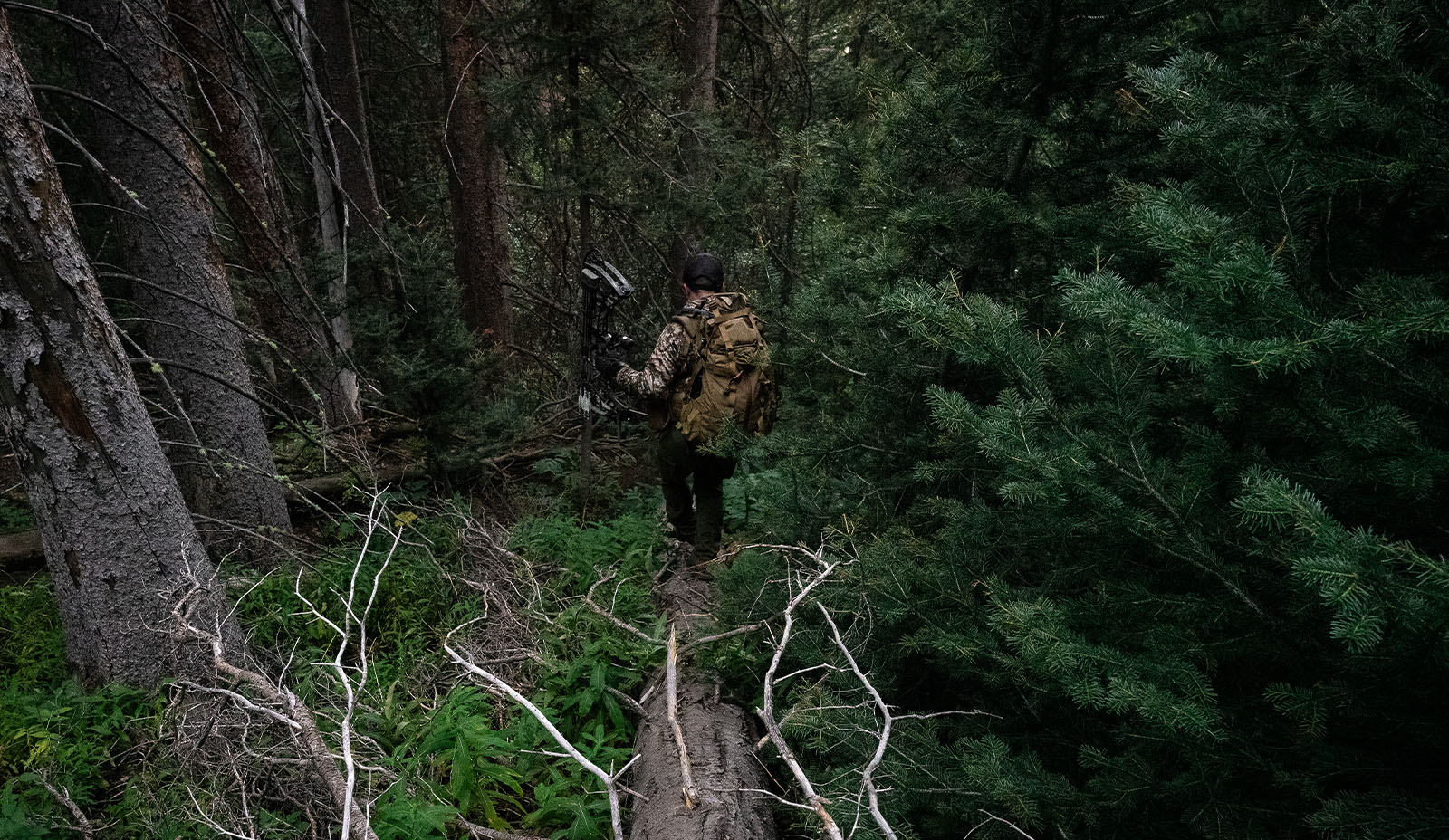
Thick undergrowth can disrupt the natural flow of both thermals and prevailing winds, creating swirling air patterns.
Thermals and Dense Vegetation
The other notable factor affecting thermals is dense vegetation. While we often focus on thermals in open terrain like hills and valleys, heavily vegetated areas create a different dynamic. In these places, the canopy traps heat, while the ground remains cooler, creating a thermal layering effect. The canopy might still radiate heat long after the ground has cooled, leading to unpredictable thermal movement that can confound hunters.
The thermal layering effect is especially pronounced in hardwoods and areas with thick undergrowth. The heat retained in the canopy creates a subtle upward pull on the air while the cooler ground-level air may move differently, making scent control difficult. Additionally, the thickness of the vegetation can disrupt the natural flow of both thermals and prevailing winds, creating swirling air patterns.
To navigate these complexities, hunters should pay close attention to how air behaves as it moves through dense vegetation. It’s also helpful to map out potential thermal hubs in thick timber, as these areas tend to trap and swirl scent, offering animals a significant advantage.
Using Thermals in Hunting Strategy
Big game, particularly mature bucks and bull elk, are acutely aware of how thermals work. They survive by knowing what danger smells like. They will bed in areas where thermals swirl, allowing them to detect predators from multiple directions. Understanding this behavior can significantly increase your odds of success in the field.
If you want to use thermals to your advantage, the general rule is to approach from above in the morning and below in the evening. This is because in the morning thermals rise, so staying above the animal keeps your scent from being carried down to it. In the evening, as thermals drop, approaching from below allows you to stay under the animal’s scent line.
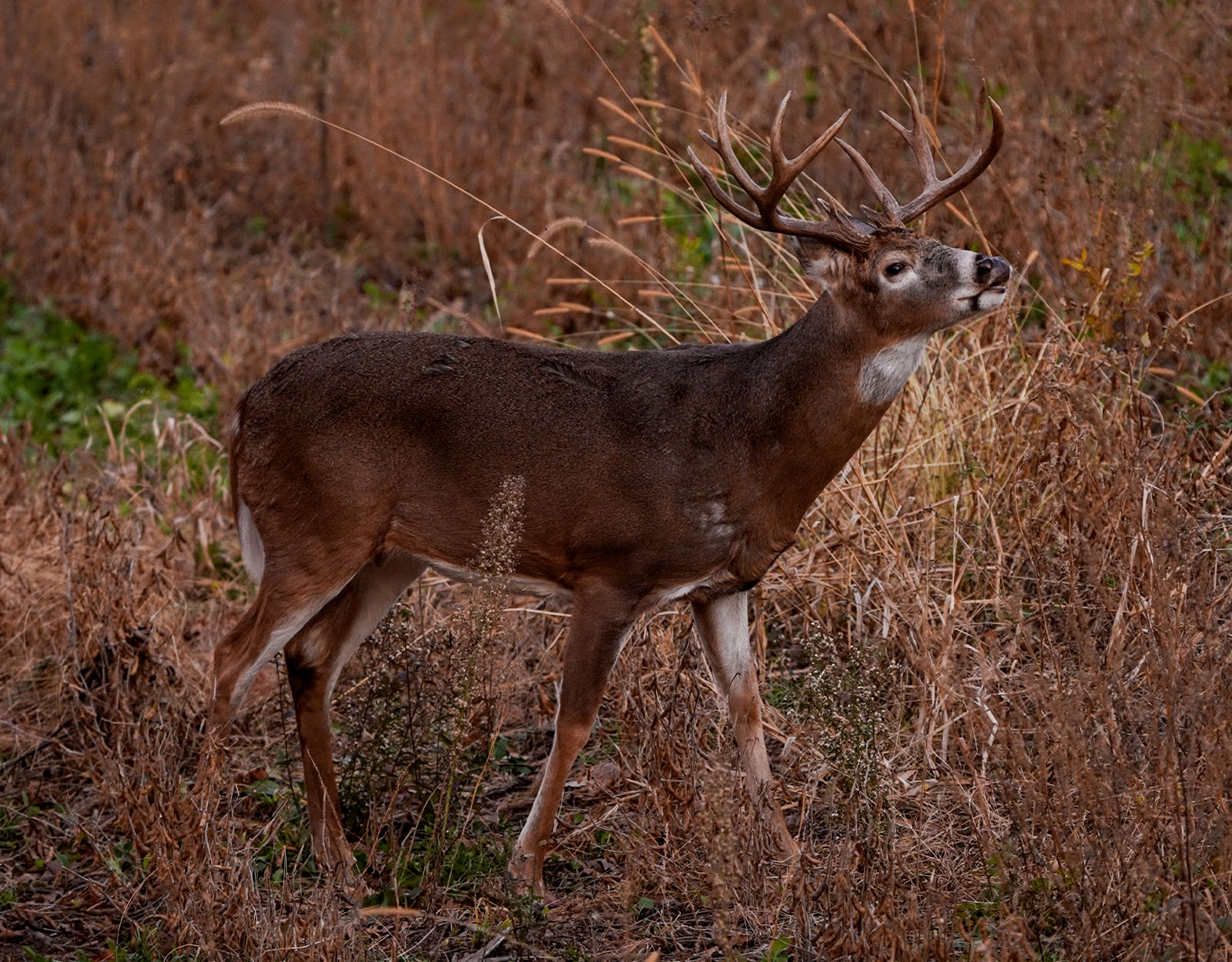
However, thermals can shift suddenly, especially with changing weather conditions like when storms roll in, so it’s essential to stay aware of the weather and any sudden shifts in temperature. A shift in ambient temperature by two to four degrees can create thermals.
Cumulus clouds are a tell-tale sign of thermals. They form when a column of air rises and cools at higher altitudes, causing the moisture in the air to condense.
One of the best times to hunt thermals is early in the morning before the prevailing wind picks up. In the mountains, thermals tend to be more consistent around dawn. By 10 a.m., thermals are generally rising. Knowing this pattern allows you to plan your hunt around when thermals are most predictable.
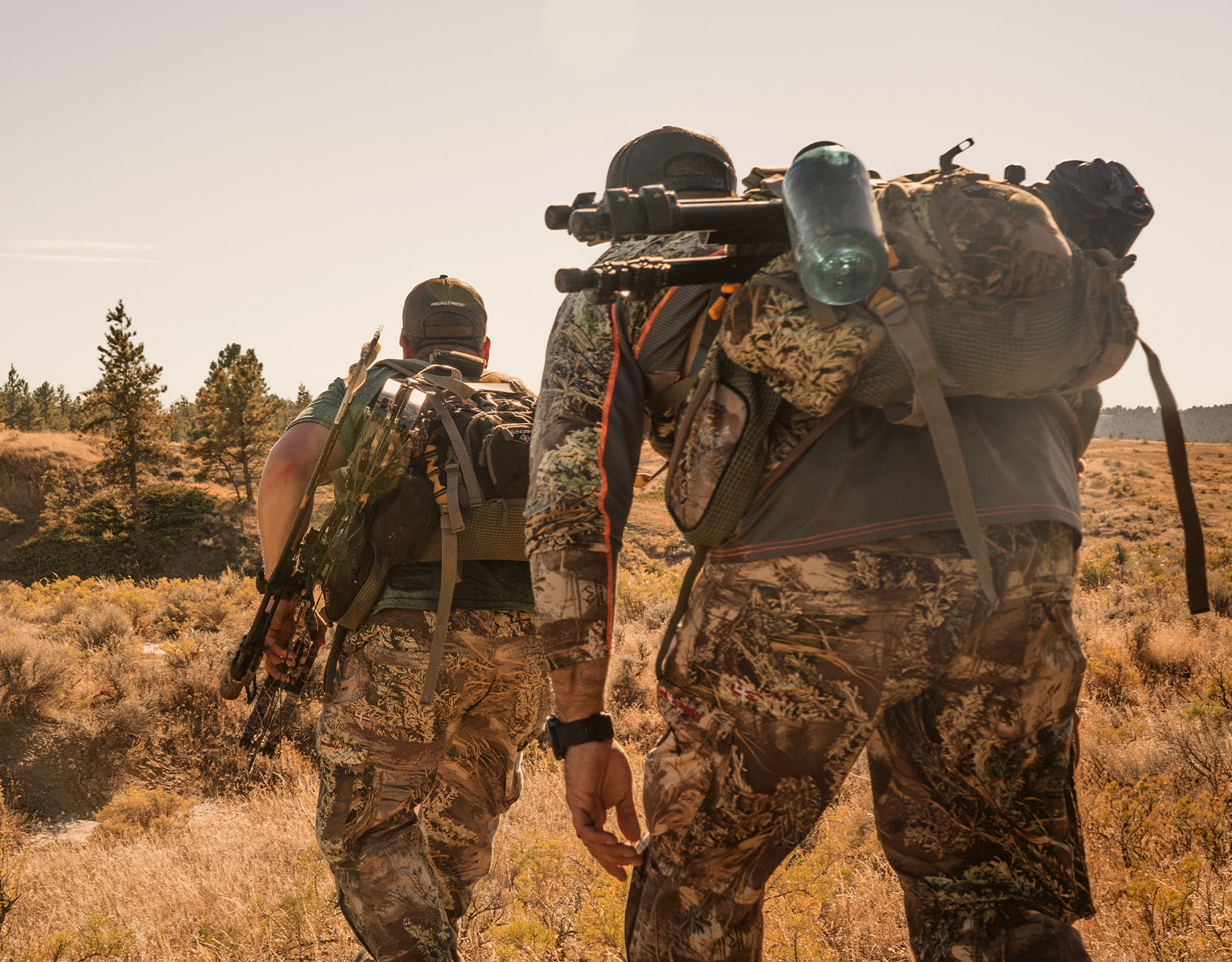
In the evening, as thermals drop, approaching from below allows you to stay under the animal’s scent line.
Using the Hunt App To Hunt Thermals
The onX Hunt App provides several features that can help hunters effectively plan their strategy around thermals:
- Weather Forecasting: By tracking temperature changes you can estimate when thermal shifts will occur, allowing you to anticipate when thermals will rise or fall.
- Optimal Wind on Waypoint: This feature allows you to set a Waypoint for a hunting spot and then track its optimal wind conditions. For example, if a SW wind is forecasted and your animal is bedded on the leeward side of a hill, you can wait for a north wind to cover your scent.
- Topo and 3D Maps: Using our 3D and Topo maps, you can identify drainages, ridges, and other landscape features that may affect how thermals behave.
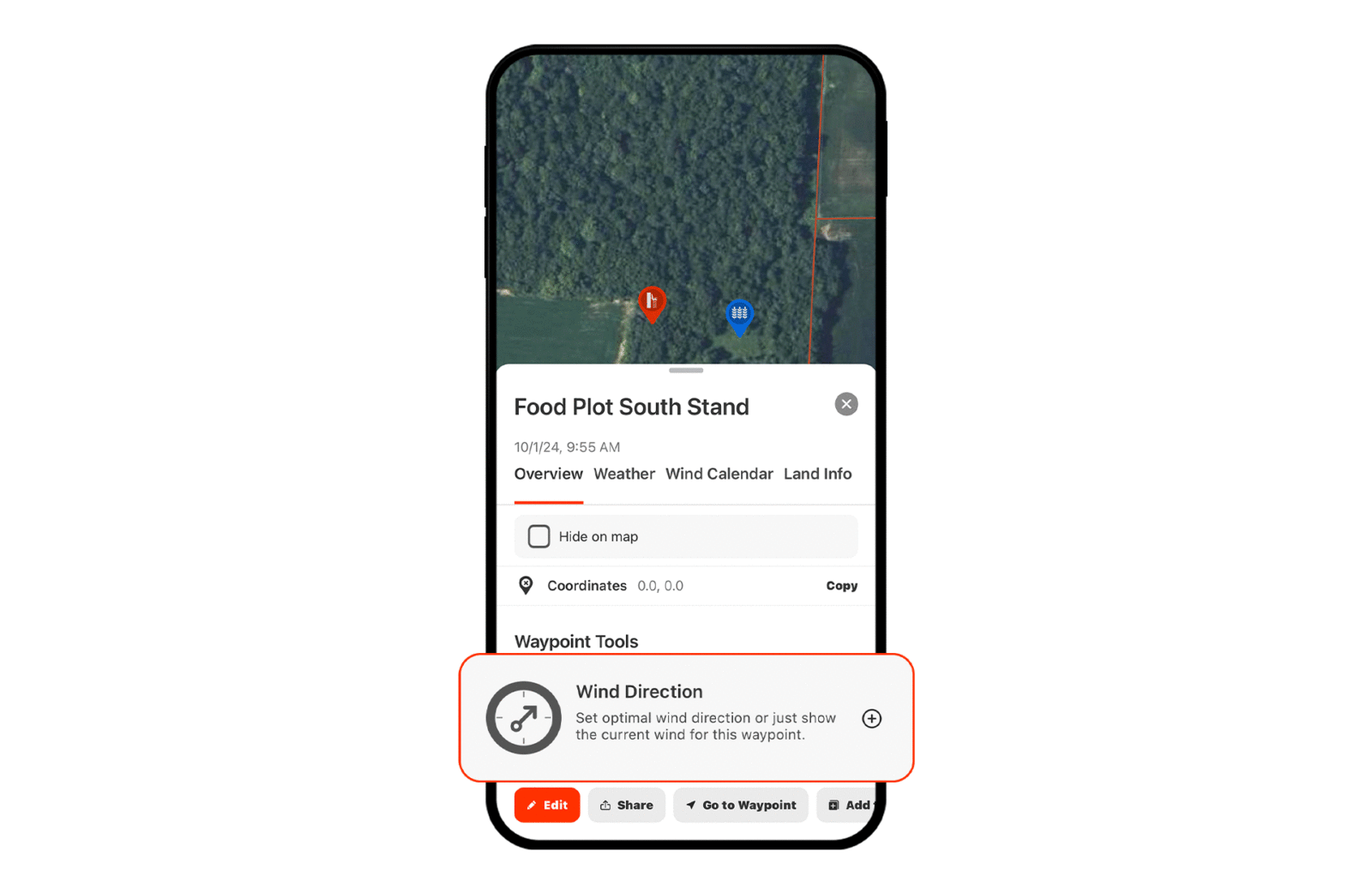
Monitor for ideal wind conditions in the Hunt App—here’s how: Tap on any Waypoint, scroll to Waypoint Tools, select Wind Direction, and choose either Show Current Wind or Set Optimal Wind.
Show Current Wind will display the wind direction and speed for that location. Set Optimal Wind goes a step further by allowing you to select your preferred wind direction(s).
Once set, Optimal Wind’s color-coding allows you to visually monitor for your ideal wind, with green indicating “good wind,” yellow indicating “okay wind,” and red indicating “bad wind.”
Thermals in Flatter Terrain
While thermals are most pronounced in mountainous regions, they also play a role in flatter terrains. In flat areas, thermals can still shift based on temperature gradients, but the effects are more subtle than in steep terrain. Remember, thermals can occur in as little as a 50-foot elevation change, which can be the difference between a river bottom and the banks on its sides.
Hunters in flatter areas should pay attention to how thermals interact with prevailing winds and the time of day, especially in regions with wide temperature swings between morning and evening.
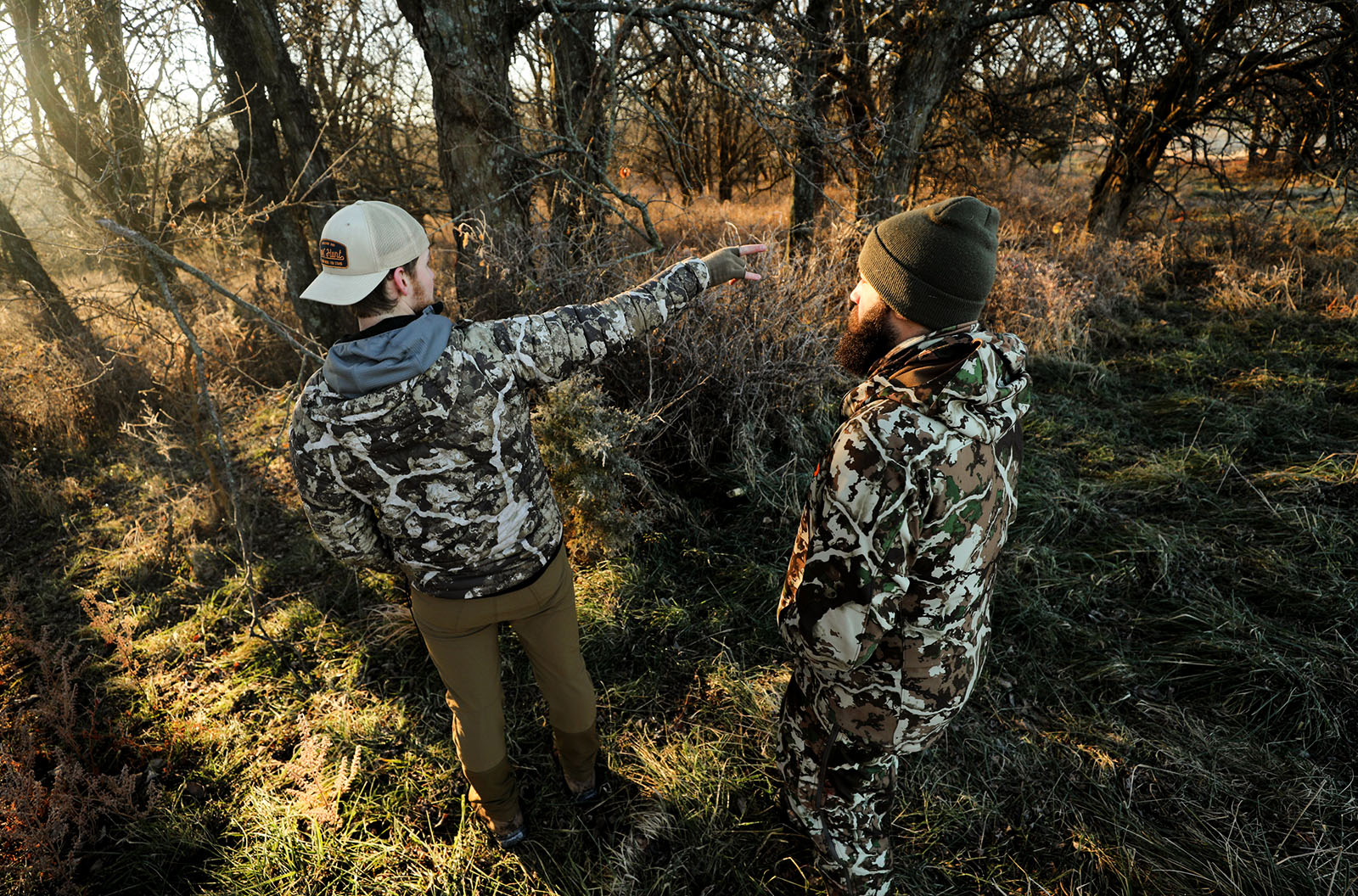
Thermals can occur in as little as a 50-foot elevation change.
Final Thoughts
Understanding thermals is one of the most critical skills a hunter can master. While thermals may seem unpredictable at first, learning how to read them and use them to your advantage can increase your odds of success. One pro tip is to carry a handful of milkweed seeds on your hunts or scouting trips. By releasing the seeds, you can visualize how thermals are behaving in real-time and adjust your approach accordingly.
With tools like onX Hunt and a deep understanding of how thermals interact with the landscape, you can elevate your hunting game and get closer to that trophy animal.